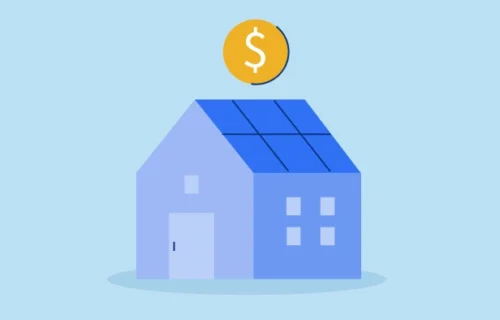
Connect with a Lima One expert today!
If you’d like to know more about this topic or see how it applies to your project, let’s talk.
Expert InvestorsReal Estate 101
How to Start Investing in Real Estate
Beginner’s Guide: How to Start Investing In Real Estate
If you had to choose just one kind of investment to build your nest egg, would you choose the stock market or real estate? According to Gallup, over half of Americans have invested money in the stock market. But as we were all reminded during the 2020 pandemic, stock investments are high risk. On the other hand, during times of financial instability, choosing to invest in real estate properties can provide reliable returns and stable income.
Whether you are a young Millennial looking to purchase your first investment properties or a seasoned real estate investor thinking about diversifying your portfolio with real estate, you undoubtedly have many questions about how to get it right. The good news is that real estate investment is not as complicated as it may seem. All you need to get started is a solid investment strategy and the right resources.
What exactly does that mean for a first-time investor? Let’s break it down step by step, based on the experience of the hundreds of investors Lima One Capital has helped over the years.
Step One: Document your investment goals.
Do you want to make a lot of money quickly so you can retire when you’re 35? Are you looking for a steady stream of monthly income for retirement? Do you want to be closely involved with your property, or do you want to take a hands-off approach? Do you want conservative, dependable returns, or do you want to swing for the fences for big profit? These questions will help you decide what kind of outcomes you’re looking for, and they will influence the investment strategy you choose. Don’t skip this step. It will be important as you decide among investments and financing options later on.
Step Two: Analyze your financial resources.
Next, take a big picture look at your finances. Do you have healthy savings you can use for down payments or even to pay cash for properties? What kind of cash flow do you have available? What current investments do you have in your retirement account? What is your current net worth? What debt do you have, and what forms does it take—credit cards, personal loans, etc.? As you take stock of where your money is right now, you’ll be able to decide which types of real estate investment make the most sense for you. For example, if you have some savings and you’re looking to increase your income quickly, it might make sense to purchase a house to renovate while you live in it, and then flip it. If you have more cash to work with, you might want to purchase several SFR properties to build a solid monthly rental income.
Step Three: Choose an investing strategy.
Once you have analyzed your financial situation and goals, it’s time to decide how to make your first investment. You don’t necessarily need a five-year plan at this point. Just decide what move you want to make first. Here are some of the most common types of real estate investing:
Fix-and-Flip Properties – With a fix-and-flip strategy, you purchase homes and then increase their value with repairs, updates, or even expansions. The goal is to turn the property around as quickly as possible (a matter of months) so you can make a quick profit. The appeal of this strategy is that when you find the right deal, you can earn a nice chunk of money in one transaction. Many investors focus on flipping houses and get extremely proficient at choosing properties and managing teams.
Residential Rental Properties – This option happens when you purchase a house and rent it out for the long term. Maybe you purchase a new home and keep your previous one as a rental. Others purchase a multifamily property to generate rent from several units at once.
Commercial Real Estate – Commercial real estate is a more complicated proposition for beginners since it requires a deeper knowledge of tax regulations and city codes. Still, if you have enough financial resources and the right property becomes available, commercial real estate can be a lucrative option.
Real Estate Investment Trusts (REITs) – This is a hands-off strategy that allows you to enjoy the benefits of real estate investing with minimal involvement in the actual property itself. REITs are similar to mutual funds in that you are investing in a company that owns commercial properties and sharing in the returns. It’s wise to go through a broker if this is the route you choose.
Step Four: Develop a location strategy.
Investing in your local area or an area you know well is usually a good move for beginning investors since you already know the real estate market and it is easier to manage a property near you. Still, it’s important to evaluate the pros and cons of the area before you buy a property. For example:
What is the job market like?
Is the area growing?
What are average rent prices?
What are the school districts like?
Is there public transportation?
What about safety and crime rates in the area?
Step Five: Build your support team.
Now we’re getting to the exciting part. You’ve laid all the groundwork, and it’s time to start assembling the team of people who will help you be successful. Here are a few of the experts you should have on your team:
A mentor – Find someone who has been successful with real estate investment and get his or her input on your plan.
A lender – Finding the right lender for real estate purchases can make or break your investment strategy. Compare rates, ask about turnaround times and pre-approvals, and be sure you understand all fees and down payment requirements. Lima One Capital is the premier choice for many investors as they begin their investment journey.
A real estate agent – Some investors act as their own real estate agent, but when you’re just starting out it pays to have someone on your team who knows all the ins and outs of the market.
A property manager – The more properties you have, the more important property managers become. You’ll also need to hire a property management company if you decide to purchase a rental property outside your local area.
This is also a great time to think about connecting with a local contractor, handyman, plumber, electrician, painter, and any other service personnel you may need to work with when you’re ready to renovate a property. This is especially true if you’re flipping houses or doing value-add rehab in another form.
Step Six: Prepare your financing strategy and budget.
Now that you know what direction you want to go with your first investment and you have chosen a lender, you should consider what financing option will work best for you. Depending on the type of property you buy, you might need one of the following:
Traditional Mortgage – If you plan to purchase a house to live in and then rent out later (or you plan to rent part of a property) then a traditional mortgage might be the best option for you. Many investors find the lowest rates with traditional mortgages; however, investors can only take out a few such loans before hitting federally mandated limits that cause them to seek alternative financing.
Fix-and-Flip Loan – A fix-and-flip loan helps you purchase a property you plan to rehab and sell quickly. These are short-term bridge loans that provide capital for purchase and construction.
Rental Loan – Rental loans are typically full-term, fully amortized loans designed to help you purchase a property you intend to hold onto and rent out. Make sure that you understand amortization, length of loan, and prepayment terms as well as the total monthly mortgage payment.
Multifamily Loan – Multifamily loans are specifically designed for properties with five or more units. Lima One Capital offers bridge loans for both stabilized properties and value-add projects.
Conclusion
Congratulations! You’ve walked through all of the steps and you’re ready to make your first real estate investment purchase! This is an exciting time, and it could be the start of a much larger real estate portfolio. When you’re ready to take the next step, contact us and learn how we can help you make your first real estate investment a success.
Subscribe for More Insights
Get the latest industry news & Lima One updates.









